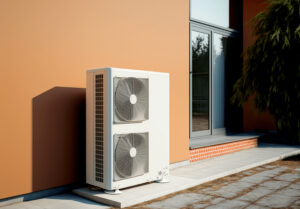 For some, the concept of thermal energy transfer is something that you have never needed to closely monitor. If you inherited your systems from another owner, or if this is your first time in the industrial business world, some of the terms themselves might be a little confusing. This knowledge can be vital in your ability to appropriately maintain your existing systems, and also to grow your operation.
For some, the concept of thermal energy transfer is something that you have never needed to closely monitor. If you inherited your systems from another owner, or if this is your first time in the industrial business world, some of the terms themselves might be a little confusing. This knowledge can be vital in your ability to appropriately maintain your existing systems, and also to grow your operation.
At Noren Thermal Solutions in Taylor, TX, we have spent over fifty years in this arena, working with companies just like yours to find a positive level of efficiency. There are three forms of the transfer of thermal energy, and knowing these processes can give you a headstart on your competition. Follow along for more information on these methods of transfer, so that you can better understand your needs.
Conduction Relies On A Solid Connection
The first form of thermal energy transfer is known as conduction, and this process involves the movement of thermal energy through touching molecules. For this reason, people most commonly associate this mechanism with solids and liquids; gases have a greater amount of space between molecules, so its transfer often comes through another way.
Certain materials have a greater degree of conductivity, depending on the specific chemical makeup. For instance, metals tend to have a higher rate of heat transfer, and there can also be a significant difference between each type. Our copper heat sinks, for instance, provide a greater amount of movement than will one made with aluminum. Knowing the difference in efficiency can help you to make the right decisions for your operation.
Radiation is a different method of thermal energy movement, in which electromagnetic waves transfer temperature into the area surrounding an object. This is why heat sinks contain a large amount of surface area!
Convection Comes With The Movement Of A Fluid Or A Gas
Convection is another form of heat transfer, which happens when a heated material flows away from its source. This is most commonly seen in liquids and gases, as solids rely on the transfer of molecular energy, rather than the movement of the material itself.
Convection can be either free or forced, depending on the thermal management applications. Free convection relates to changes in buoyancy or even phase-change technology. In these situations, a heated material is allowed to flow away from your vital equipment, where it can be more safely dispersed. If the movement is caused by an external source such as a fan, it is known as forced convection.
Knowing The Science With Noren Thermal Solutions
Speak with a member of our team at Noren Thermal Solutions in Taylor, TX for more information, so that we can help you to understand the needs of your business. Since 1968, we have been working alongside vital members of the business community to find success!







